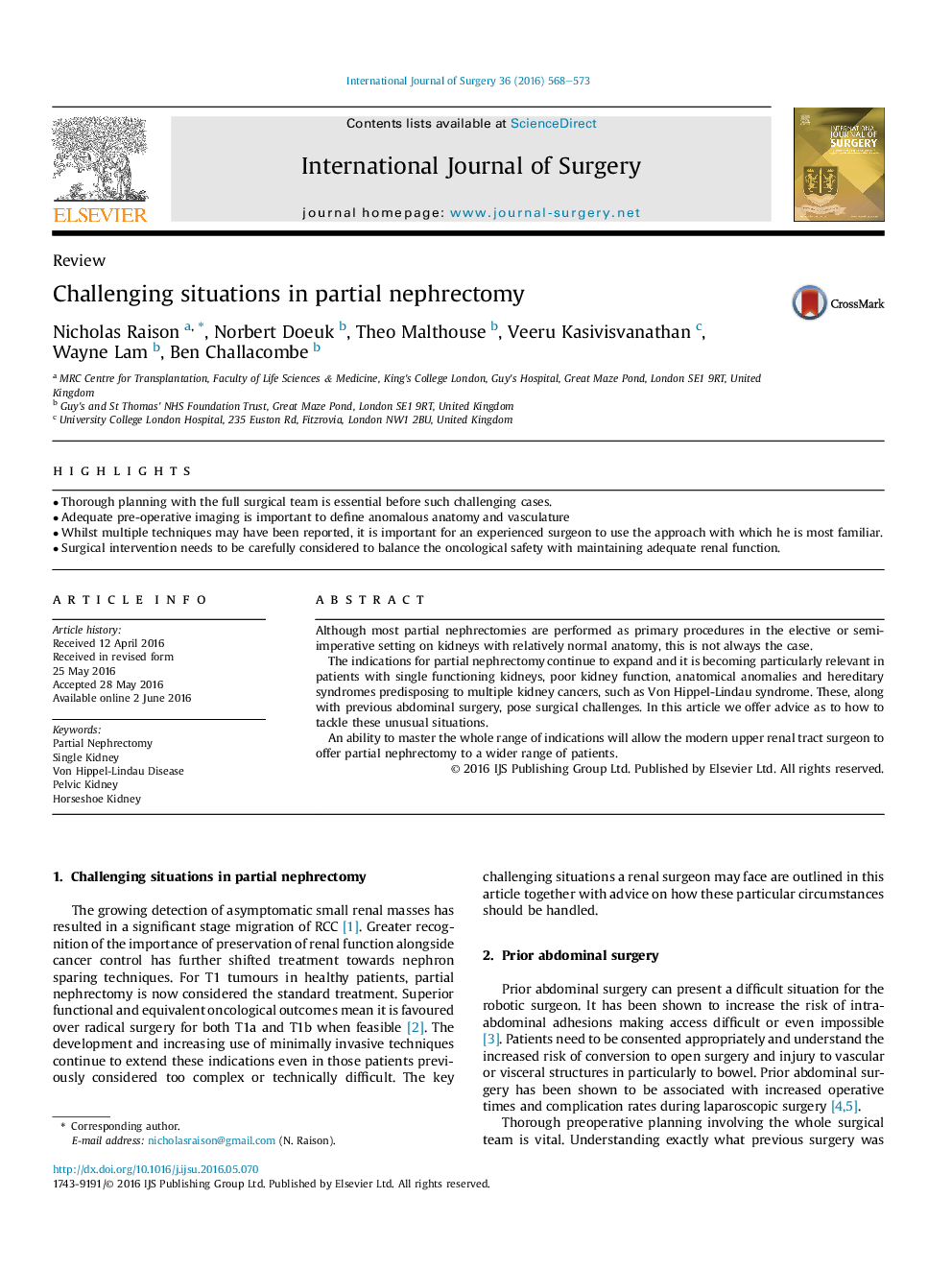| Article ID | Journal | Published Year | Pages | File Type |
|---|---|---|---|---|
| 5731948 | International Journal of Surgery | 2016 | 6 Pages |
â¢Thorough planning with the full surgical team is essential before such challenging cases.â¢Adequate pre-operative imaging is important to define anomalous anatomy and vasculatureâ¢Whilst multiple techniques may have been reported, it is important for an experienced surgeon to use the approach with which he is most familiar.â¢Surgical intervention needs to be carefully considered to balance the oncological safety with maintaining adequate renal function.
Although most partial nephrectomies are performed as primary procedures in the elective or semi-imperative setting on kidneys with relatively normal anatomy, this is not always the case.The indications for partial nephrectomy continue to expand and it is becoming particularly relevant in patients with single functioning kidneys, poor kidney function, anatomical anomalies and hereditary syndromes predisposing to multiple kidney cancers, such as Von Hippel-Lindau syndrome. These, along with previous abdominal surgery, pose surgical challenges. In this article we offer advice as to how to tackle these unusual situations.An ability to master the whole range of indications will allow the modern upper renal tract surgeon to offer partial nephrectomy to a wider range of patients.
